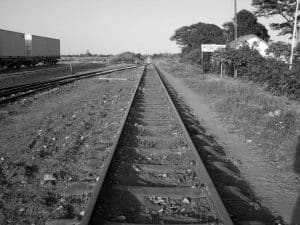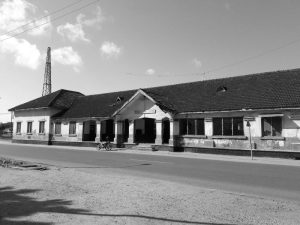Introduction to the Tanga Line
The Tanga Line, a historic railway that once connected the coastal town of Tanga to the heart of Tanzania, holds a special place in the country’s transportation legacy. This iconic rail network, built during the German colonial era, played a crucial role in shaping the economic and social landscape of the region. However, over the years, the Tanga Line has faced a series of challenges that have led to its gradual decline, leaving behind a nostalgic reminiscence of its former glory.
As Tanzania continues to evolve and modernize its infrastructure, the call to resurrect the Tanga Line has grown increasingly louder. This article explores the historical significance of the Tanga Line, the challenges it has faced, and the potential benefits of reviving this essential coastal rail connection.
Historical Significance of the Tanga Line
The Tanga Line was constructed in the late 19th century, during the German colonial rule in what was then known as German East Africa. The railway was designed to serve as a vital transportation link, connecting the port city of Tanga to the interior regions of the country. This strategic move was aimed at facilitating the movement of goods, resources, and people, thereby strengthening the colonial administration’s grip on the region.
The Tanga Line played a crucial role in the economic development of the area, as it enabled the efficient transportation of agricultural products, such as sisal, cotton, and cashew nuts, to the coast for export. The railway also facilitated the movement of people, allowing for the integration of communities and the expansion of trade networks.
Challenges Faced by the Tanga Line

Over the years, the Tanga Line has faced a multitude of challenges that have contributed to its gradual decline. One of the primary issues has been the lack of consistent investment and maintenance, leading to the deterioration of the rail infrastructure. This, in turn, has resulted in reduced reliability, increased travel times, and a decline in passenger and cargo volumes.
Additionally, the rise of alternative transportation modes, such as road networks and air travel, has posed a significant challenge to the Tanga Line’s relevance. As these alternative options became more accessible and efficient, the railway gradually lost its competitive edge, leading to a steady decline in its usage.
Furthermore, the political and economic instability that has plagued the region at various points in history has also had a detrimental impact on the Tanga Line. Periods of civil unrest, policy changes, and economic downturns have all contributed to the railway’s struggles, making it increasingly difficult to maintain and operate.
Potential Benefits of Resurrecting the Tanga Line
The revitalization of the Tanga Line holds immense potential for Tanzania’s economic and social development. By restoring this vital coastal rail connection, the country can unlock a range of benefits that could significantly impact the region.
- Economic Stimulation: A functional Tanga Line would facilitate the efficient transportation of goods, both within Tanzania and for export. This would boost the country’s overall economic productivity, enabling businesses to access new markets and reduce transportation costs.
- Employment Opportunities: The resurrection of the Tanga Line would create a multitude of job opportunities, from railway operations and maintenance to the development of supporting industries along the rail corridor.
- Improved Connectivity: A revitalized Tanga Line would enhance the connectivity between Tanzania’s coastal regions and its interior, fostering greater integration and facilitating the movement of people, goods, and services.
- Tourism Potential: The Tanga Line traverses some of Tanzania’s most picturesque coastal areas, offering tourists a unique and immersive experience. By reviving the railway, the country can capitalize on its tourism potential, attracting visitors to explore the region’s natural beauty and cultural heritage.
- Environmental Sustainability: Compared to road-based transportation, rail networks are generally more energy-efficient and environmentally friendly. By reviving the Tanga Line, Tanzania can reduce its carbon footprint and contribute to its sustainability goals.
Current Efforts to Revive the Tanga Line
In recent years, there have been concerted efforts to revive the Tanga Line and restore its former glory. The Tanzanian government, in collaboration with various stakeholders, has initiated a series of projects aimed at rehabilitating the rail infrastructure and improving the line’s operational efficiency.
One such initiative is the Tanzania Railways Corporation’s (TRC) plan to refurbish and upgrade the Tanga Line. This includes the replacement of aging tracks, the modernization of signaling systems, and the acquisition of new rolling stock. Additionally, the government is exploring public-private partnerships to attract investment and expertise in the railway sector, further bolstering the efforts to revive the Tanga Line.
Economic Impact of a Functional Tanga Line
The successful resurrection of the Tanga Line would have a profound impact on Tanzania’s economy. By reestablishing this vital coastal rail connection, the country can expect to see a surge in economic activities, ranging from increased trade and commerce to the development of supporting industries.
One of the key economic benefits would be the enhanced transportation of agricultural products, such as sisal, cotton, and cashew nuts, to the port of Tanga for export. This would not only boost the incomes of farmers and producers but also strengthen Tanzania’s position in global agricultural markets.
Moreover, the Tanga Line’s revival would facilitate the movement of other goods and resources, such as minerals and manufactured products, further diversifying the country’s economic activities and revenue streams. This, in turn, would create new job opportunities, stimulate local economies, and contribute to the overall economic growth of the region.
Tourism Potential along the Tanga Line
The Tanga Line’s route traverses some of Tanzania’s most picturesque coastal areas, offering a unique opportunity to capitalize on the country’s tourism potential. By reviving the railway, Tanzania can provide visitors with a truly immersive and memorable experience, allowing them to explore the region’s natural beauty, cultural heritage, and historical significance.
Along the Tanga Line, travelers can discover pristine beaches, charming coastal towns, and diverse wildlife habitats. The railway’s journey would offer stunning views of the Indian Ocean, as well as the opportunity to visit sites of historical and cultural importance, such as the ancient ruins of Pangani and the vibrant markets of Tanga.
The revival of the Tanga Line would also enable the development of tourism-related infrastructure, such as hotels, restaurants, and cultural attractions, further enhancing the visitor experience and contributing to the local economy.
Environmental Considerations in Resurrecting the Tanga Line

As Tanzania embarks on the journey to resurrect the Tanga Line, it is crucial to consider the environmental implications of this endeavor. The rehabilitation and operation of the railway must be carried out in a manner that minimizes the impact on the surrounding ecosystems and aligns with the country’s sustainability goals.
One key consideration is the potential impact on the coastal habitats and wildlife along the Tanga Line’s route. Careful planning and environmental assessments must be conducted to ensure that the restoration and operation of the railway do not disrupt the delicate balance of these fragile ecosystems.
Additionally, the use of energy-efficient and environmentally-friendly technologies in the railway’s operations, such as renewable energy sources and eco-friendly rolling stock, can further enhance the Tanga Line’s sustainability. This approach not only reduces the railway’s carbon footprint but also contributes to Tanzania’s broader environmental conservation efforts.
Future Prospects and Opportunities for the Tanga Line
As Tanzania continues to invest in the revitalization of the Tanga Line, the future holds immense promise for this historic coastal rail connection. With a renewed focus on infrastructure development, the country can leverage the Tanga Line to drive economic growth, foster social integration, and promote sustainable tourism.
Looking ahead, the Tanga Line could serve as a catalyst for the development of new industries and economic hubs along its route. The integration of the railway with other modes of transportation, such as road networks and maritime shipping, could further enhance the region’s connectivity and accessibility, opening up new avenues for trade and investment.
Moreover, the Tanga Line’s revival can pave the way for the preservation and promotion of Tanzania’s rich cultural heritage. By incorporating elements of local history and traditions into the railway’s operations and tourism offerings, the country can showcase its unique identity and provide visitors with a truly immersive experience.
Discover the untapped potential of Tanzania’s Tanga Line and be a part of its resurgence. Contact us today to learn more about the exciting opportunities and how you can contribute to the revival of this historic coastal rail connection.
Conclusion: The Importance of Preserving Tanzania’s Coastal Rail Connection
The Tanga Line holds a special place in Tanzania’s transportation history, serving as a vital link between the country’s coastal regions and its interior. Despite the challenges it has faced, the call to resurrect this iconic railway has grown louder, as the potential benefits of its revival become increasingly apparent.
By investing in the restoration and modernization of the Tanga Line, Tanzania can unlock a wealth of economic, social, and environmental benefits that will positively impact the lives of its citizens and the region as a whole. From boosting trade and commerce to fostering tourism and promoting sustainability, the revitalization of the Tanga Line offers a unique opportunity for the country to chart a new course for its future.
As Tanzania continues to evolve and modernize its infrastructure, the preservation and revitalization of the Tanga Line must remain a top priority. By rediscovering and resurrecting this coastal rail connection, the country can not only honor its rich transportation legacy but also pave the way for a more prosperous and sustainable future.
For more articles related to Railway and train travel Tanzania, click here!

































